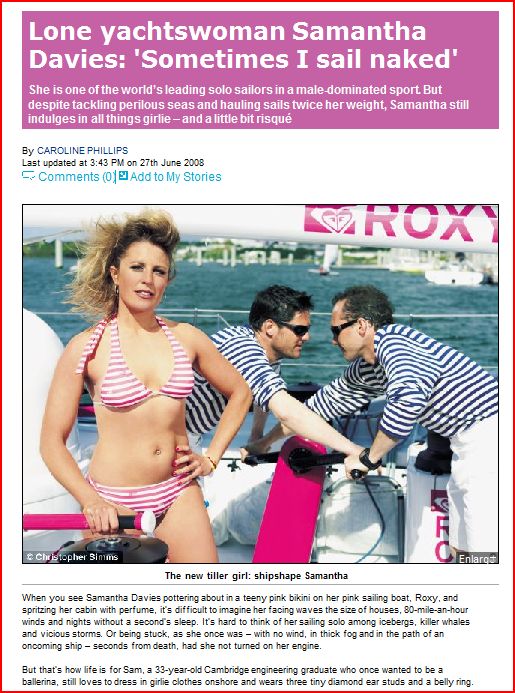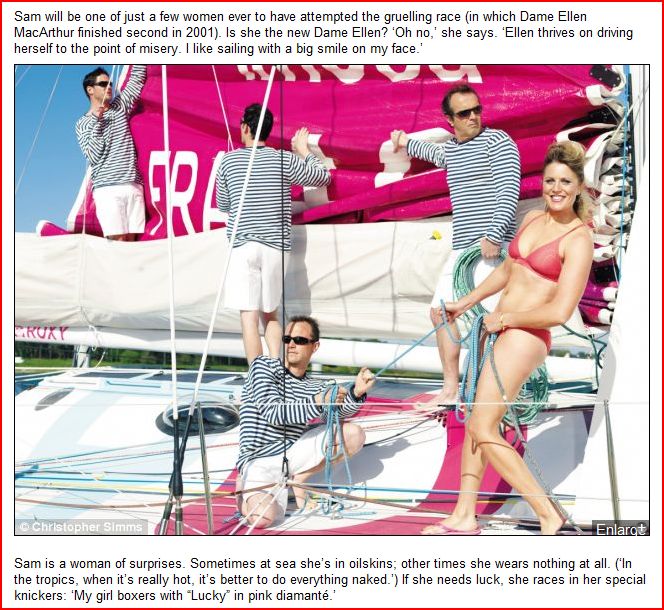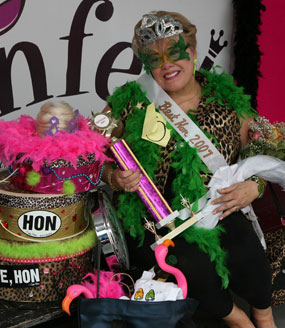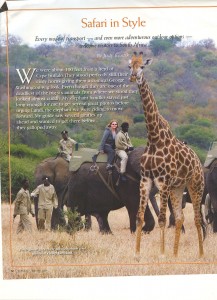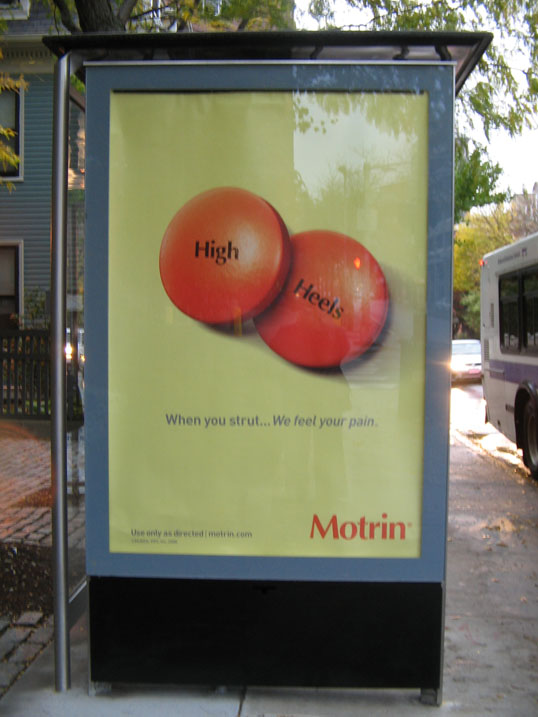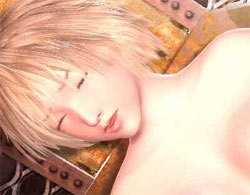Markus G. alerted us to some of the coverage of Samantha Davies, one of the few women to ever compete in the Vendée Globe, an around the world non-stop sailing competition.
The coverage, in the Daily Mail, highlights her sexuality instead of her competence as a sailor. Sexualizing women is problematic because it undermines any notion of her competence by reducing her to one purpose–fulfilling men’s lust–and erases, in doing so, her skills, work ethic, experience, and knowledge.
The headline reads: “Lone Yachtswoman Samantha Davies: ‘Sometimes I sail naked.'”
Text includes such doozies as:
When you see Samantha Davies pottering about in a teeny pink bikini on her pink sailing boat, Roxy, and spritzing her cabin with perfume, it’s difficult to imagine her facing waves the size of houses, 80-mile-an-hour winds and nights without a second’s sleep.
But that’s how life is for Sam, a 33-year-old Cambridge engineering graduate who once wanted to be a ballerina, still loves to dress in girlie clothes onshore and wears three tiny diamond ear studs and a belly ring.
Let’s get her sailing credentials out of the way – then we can move on to the important questions, such as: ‘How do you have skin that looks like a Clarins advert when you don’t sleep and your face gets ravaged by sun, salt and sea?’
‘In rough seas, sometimes it’s too dangerous to boil water, so you just eat freeze-dried food,’ she smiles. ‘But as I’m a girl, my nutritionist acknowledges that I have to eat chocolate each day!’
‘Don’t give me big muscles,’ Sam wails. ‘But you’ve got to pull up your mainsail, and you can’t do that without strong muscles,’ replies her trainer. ‘But my objective after the race,’ insists Sam, ‘is to have smaller, ladylike arms and shoulders!’
…she uses her sex to her advantage: ‘Whenever I don’t want to climb the mast to do a job at the top, I wear a short skirt so that I simply can’t get up there.’
Other pictures included in the news story:

